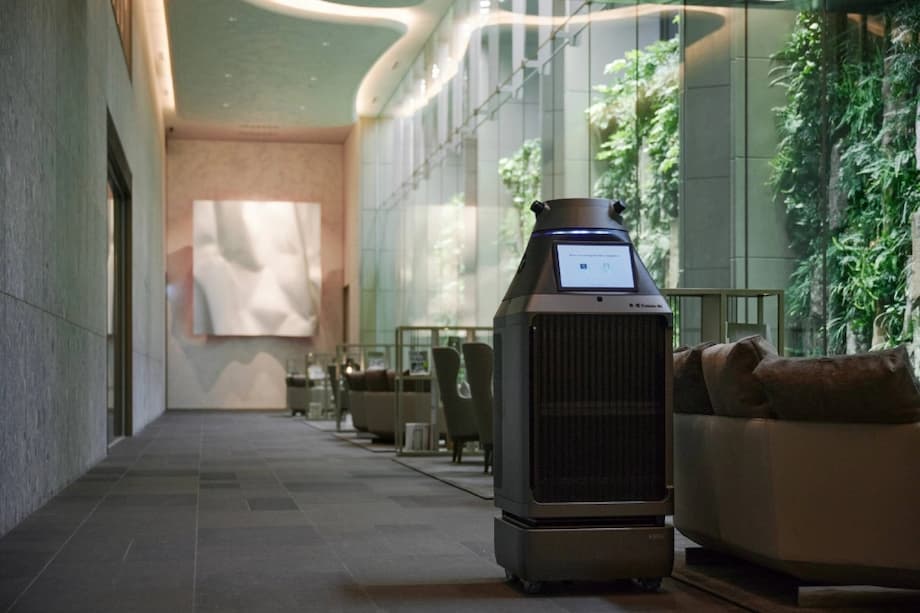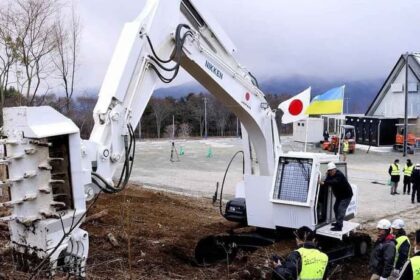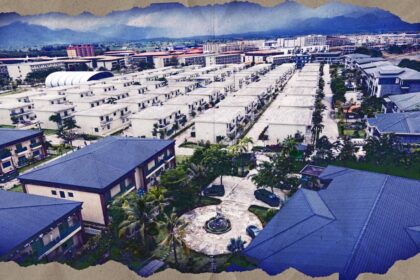Where robots meet daily business in Japan
Robots have moved from factory floors into daily life in Japan. They now carry goods through apartment towers, run errands across office campuses, and even help vendors at a baseball stadium. Companies and building operators see them as timely answers to a tight labor market and rising expectations for faster service. The push is simple. Pair robots and people in ways that remove the grunt work, trim waiting time, and keep businesses running efficiently.
- Where robots meet daily business in Japan
- Why Japan is turning to robots now
- How the new services work
- Culture and design choices shape adoption
- Measurable gains and the jobs question
- Market momentum and key players
- Barriers and how companies get past them
- What Japan exports and what the world learns
- What to Know
At Es Con Field Hokkaido, home of the Hokkaido Nippon Ham Fighters, a work assistance robot named Suppot helps staff transport beer kegs and other heavy supplies along concourses. Suppot detects and automatically follows the assigned user, which lets workers keep both hands free. The club is also testing a second robot that can sell snacks and drinks directly to fans. Parcel delivery group Yamato Holdings oversees the stadium robots and expects that similar systems will soon appear in other venues.
In central Tokyo, four robots serve as porters at Mita Garden Hills, a large apartment complex developed by Mitsui Fudosan and partners. The units carry residents baggage of up to 30 kilograms between the lobby and individual apartments. Building doors and elevators synchronize with the robots, so trips are fully automated from start to finish. After Mitsui Fudosan mapped optimal routes and informed residents about the option, the robots took on more than one fifth of porter requests. A few stations away, telecom firm KDDI and convenience store chain Lawson opened an experimental store in the Takanawa Gateway City redevelopment area. Ten robots deliver items to employees desks and perform mobile sales around the office district as the partners collect data to refine store operations and customer convenience.
Why Japan is turning to robots now
Japan is aging at a speed few countries have experienced. Nearly three in ten residents were over 65 in 2021, and the share keeps rising. Employers face shortages in transport, retail, healthcare, construction, and building services. Large scale immigration remains limited, so companies are turning to technology that can stretch the effort of every worker and keep services consistent day and night. Government and industry share the same objective. Keep quality high while easing the load on a shrinking workforce.
Public policy has set the frame for this shift. The national Society 5.0 agenda promotes the integration of robotics and digital tools across everyday settings, not just factory lines. In practice, that looks like delivery robots for office campuses, smart porters for apartments, and assistive devices in eldercare. It also includes skill augmenting tools, for example excavators and trucks that use digital controls to help less experienced operators perform complex tasks. The goal is not to replace people, it is to combine human judgment with automation so that fewer staff can accomplish more with lower risk.
How the new services work
The current wave of robots in Japan focuses on repeatable tasks in controlled spaces. The aim is simple logistics done safely and quietly. Most units navigate with a mix of sensors, cameras, and building maps. They roll along at walking speed, stop for pedestrians, and share status updates with central control rooms. Many are tied into building systems, so an elevator can be called without human help and a fire door can open as a robot approaches.
Inside the stadium pilot
At Es Con Field Hokkaido, Suppot helps beverage vendors keep pace during games. The robot follows a designated staff member, carries heavy kegs and supply trays, and returns for the next run when finished. The club is also testing a sales robot that can move among seats to offer drinks and food. Yamato Holdings manages the operations at the ballpark and sees similar potential in shopping centers and event arenas.
Residential delivery gets integrated
Mita Garden Hills shows how physical infrastructure can work with robotics. Four porter units handle baggage up to 30 kilograms, riding elevators, passing through doors, and reaching the resident floor without escort. After route mapping and a clear explanation to residents, more than 20 percent of porter requests now go to the robots. The service relieves concierges during peak move in and move out periods and helps older residents who cannot carry heavy bags.
Office shopping without leaving your desk
At the KDDI and Lawson test store in Takanawa Gateway City, ten robots shuttle items from shelves to office floors and also sell snacks on the move. The companies are studying delivery times, out of stock alerts, and the way employees interact with mobile sales. Their larger aim is a blueprint for stores that run smoothly with fewer staff while still feeling convenient and personal.
Culture and design choices shape adoption
Robots are often seen as partners in Japan. Cultural touchpoints, from Shinto influenced ideas about objects to decades of friendly robot characters in media, have framed machines as helpful companions. The business mindset adds another thread. Continuous improvement, known as kaizen, pushes teams to refine tasks step by step. That culture favors reliable machines that do one job very well, then expand to the next task when ready.
Many of the robots in service settings are built for coexistence with people. They focus on safety, predictability, and straightforward controls. Japanese firms also stress meticulous engineering and durability, which reduces breakdowns that could interrupt service. The result is a good fit for places like stadiums and apartment towers, where steady performance matters more than speed. Industry and government have paired this approach with standards work and test beds under the Society 5.0 framework so that new tools meet safety rules and privacy expectations before they spread widely.
Measurable gains and the jobs question
Economic research on Japan suggests that robot adoption can raise productivity while supporting employment. In research published by the University of Chicago Press, a study that tracked robot prices and usage across industries found that lower prices led to more robots and more jobs as output expanded in the sectors that adopted the machines. The effect came from higher productivity and larger production scale at firms that brought in robots.
As the authors of the study write:
We find that the decline in robot prices increased both the number of robots and employment by raising the productivity and production scale of robot adopting industries.
Separate analysis of workplace AI in Japan points to a modest macro level lift. Based on worker surveys in 2023 and 2024, a recent column for the Centre for Economic Policy Research estimated a 0.5 to 0.6 percent boost to labor productivity compared to a world without AI. The share of workers using AI has grown, which suggests wider gains as adoption spreads.
The author summarized the result this way:
The macroeconomic productivity impact is +0.58 percent, suggesting a 0.5 to 0.6 percent boost to labor productivity at the macro level compared to the case without AI.
Industry leaders frame service robots as a way to shift human effort toward higher contact work. SoftBank Robotics described the goal when it announced a partnership to deploy service robots in Japan and abroad:
The increased operational efficiency gained from service robots will allow businesses to allocate more time and resources for service crews to refocus on customer service.
In real settings, that means concierges handle guest issues while robots carry bags, store clerks advise customers while machines run deliveries, and stadium staff spend more time with fans while robots move supplies.
Market momentum and key players
Behind these pilots is a fast growing market. Straits Research estimates that the Japan industrial robots market was worth 1,271.27 million US dollars in 2024 and could reach 3,005.42 million US dollars by 2033, a compound annual growth rate of 9.8 percent from 2025 through 2033. Growth is concentrated in electronics and automotive manufacturing, with strong activity in Tokyo, Osaka, Nagoya, Fukuoka, and Kyoto. The research lists ABB, Yaskawa, Fanuc, KUKA, Mitsubishi Electric, Kawasaki Heavy Industries, Denso, Nachi Fujikoshi, and Epson among the key suppliers.
Other signals point to deep capacity. By 2022, Japanese makers produced roughly half of all industrial robots sold worldwide, and orders from Japan based manufacturers reached a record 7.35 billion US dollars that year. In 2021, Japan used 631 industrial robots for every 10,000 workers in manufacturing, far ahead of the United States. Major groups including Mitsubishi Electric, Fanuc, and Kawasaki continue to develop gear for welding, painting, material handling, and precision assembly.
On the service side, companies are adding AI, machine learning, and computer vision so that machines can work safely with people and adapt to changing layouts. Cobots, short for collaborative robots that are designed to operate next to workers, are now common in logistics centers and light assembly. Advances in 5G connectivity, software, and the internet of things let robots share data in real time, while digital twins give managers a virtual copy of a facility to test routes and schedules before any device is deployed on site.
Barriers and how companies get past them
High upfront cost, integration complexity, and change management slow adoption for smaller firms. Robots need to talk to elevators, automatic doors, and security systems, which may require upgrades in older buildings. Small and midsize businesses can also struggle to choose vendors and plan maintenance. Cybersecurity and privacy rules add another layer that teams must get right before a roll out.
Japanese projects are building playbooks to solve these problems. The KDDI and Lawson store shows how a trial can gather data on routes, delivery times, and shopper behavior before scaling. At Mita Garden Hills, route mapping and clear resident messaging unlocked real usage, with robots handling more than 20 percent of porter jobs. Vendors promote cobots that stop when people are near, which eases safety reviews. Digital twins help planners test ideas with real time data. Some service robots are offered as monthly subscriptions with vendor managed service, which can shift cost from capital budgets to operating budgets and make adoption easier for smaller sites.
What Japan exports and what the world learns
Japan is also exporting this know how. In India, warehouses are adding Japanese systems that pick, sort, transport, and stack goods with minimal human oversight. Core tools include automated guided vehicles that move goods on set paths, robotic arms for picking and packing, and automated storage and retrieval systems that use dense shelving to save space. Operators report gains from round the clock operation, safer working conditions, and better inventory accuracy. The model fits sectors such as ecommerce, pharmaceuticals, automotive parts, and fast moving consumer goods.
Partnerships matter as much as hardware. Japanese vendors often train local staff and help redesign workflows so robots and people complement each other. Costs and infrastructure gaps remain barriers, yet the direction is clear. As equipment prices fall and software improves, more countries are adopting a similar mix of human skills and automation for logistics, delivery, and retail. Japan is shaping that playbook through real world pilots in offices, stadiums, and residential towers.
What to Know
- Stadium pilots in Hokkaido use Suppot to transport supplies, with a separate sales robot under test for food and drink.
- Yamato Holdings manages operations for stadium robots and expects to expand the concept to other venues.
- Mita Garden Hills runs four porter robots with a 30 kilogram capacity that coordinate with doors and elevators, now handling more than 20 percent of porter requests.
- KDDI and Lawson operate an experimental store with ten robots that deliver to offices and sell on the move.
- Japan faces a severe labor shortage as nearly 30 percent of residents were over 65 in 2021, and Society 5.0 supports solutions that join people and machines.
- Academic research published by the University of Chicago Press finds that falling robot prices raised both robot use and jobs in adopting industries.
- Worker surveys reported by the Centre for Economic Policy Research suggest AI has added roughly 0.5 to 0.6 percent to labor productivity at the macro level.
- Straits Research projects Japan’s industrial robot market to reach 3,005.42 million US dollars by 2033, a 9.8 percent compound annual growth rate from 2025.
- Japan produced about half of the world’s industrial robots in 2022 and used 631 robots per 10,000 manufacturing workers in 2021.
- SoftBank Robotics says service robots boost efficiency and let crews refocus on customer service.
- Key challenges include cost and integration, while cobots, digital twins, and pilot programs are helping sites adopt safely and effectively.
- Japanese vendors are exporting their approach to places like India, where warehouse automation is improving safety, speed, and space use.












